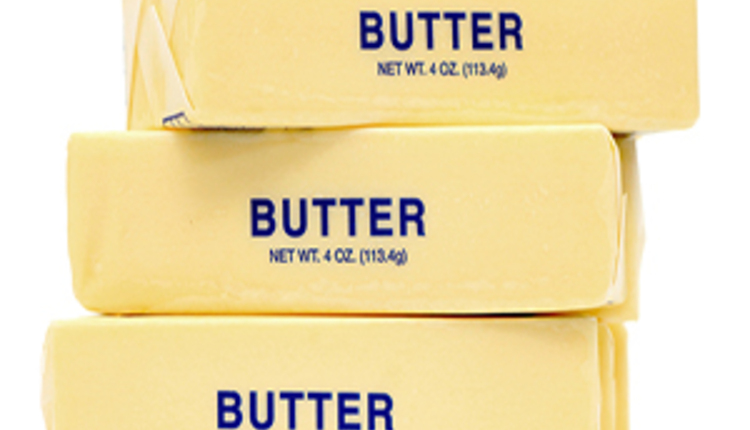
Basically, the industry doesn’t believe the stocks number. There is more than enough bulk butter available in the market, and major butter makers tell us their inventories haven’t dropped off in the same way USDA inventory data has. So if we assume the inventory data is wrong, then either butter production is running stronger than USDA currently estimates or demand is weaker than they estimate. When I calculate how much milkfat is being produced at the farm level and how much fat went into dairy products like cheese, bottled milk, ice cream, and butter. the components balance relatively well. I think the butter production data is reasonable and the disconnect is probably on the demand side.
Domestic demand is hard to measure. USDA doesn’t measure it directly — it is a residual calculation from production, imports, exports, and stocks. From what I can see in actual retail scanner data, retail butter sales are likely up about 1% this year and I doubt we’re seeing much growth in food service or processed food use of butter. Using sources other than the USDA it is hard to argue that domestic demand is up 4.8% YTD. To keep things simple, let’s assume domestic demand has been running flat compared to last year. If we make that assumption and use it to calculate inventories instead of relying on USDA for inventory data, it would suggest that U.S. butter stocks at the end of June are actually up 5.9% from last instead of being down 5.9% as USDA is currently estimating.

If stocks are actually up about 5% and domestic demand was flat in the second quarter, then the stocks:use ratio would suggest the price of butter should have been about $2.40, which is exactly what it was.
To get the stocks:use ratio weak enough to justify current prices, third quarter stocks would need to be up 16% year-over-year (YoY) or more. Even if I assume butter production is strong and imports improve a bit, the strong exports and flat domestic demand would only leave inventories up about 3% in the third quarter. So we would either need to see butter production running even stronger in the third quarter than it was in the second quarter or domestic demand has dropped well below last year, but it is still tough to make the balance table weak enough to justify the prices we’re seeing in the spot market.
Something else is likely driving the weakness, but whether it is temporary or a structural change in the market is hard to say at this point. The argument for a structural change is that the fat content in the milk has continued to rise over time. From what I understand, American-style cheesemakers in the past have been able to add additional protein to the incoming milk (nonfat dried milk, condensed skim milk, or unfiltered skim milk) to maintain the correct fat:protein ratio for the type of cheese they were producing. However, the fat content in the milk has reached a level where they can’t (or don’t want to) add more protein and these cheese plants are now selling significantly more cream than they used to. That comes on top of existing cream sellers, like Mozzarella and bottling plants, that are also skimming off and selling more fat than they used to. Strong demand for cream going into food service and retail over the past 10 years has absorbed a lot of the excess fat, but cream going into food service looks like it has flattened out over the past year while production has continued to grow and more plants are selling excess cream. Even if USDA butter stocks data is correct and inventory is down 5.9% from last year there is a lot of cream available in the market and butter production is likely still strong. With plenty of fresh production the industry is not worried about running short during the holiday period.
Temporary weakness could come from traders who stocked up on what looked like cheap butter earlier this year unwinding those positions. Too, retailers and/or end users may have stocked up early this year and sellers are finding a pocket of weak demand during the summer. There are also some anomalies in global trade flow data. It looks like there could be a significant amount of butter sitting at ports waiting for more certainty around tariffs rates before clearing through customs and officially becoming available inside the U.S. If that butter is not captured in the Cold Storage report, and then suddenly clears through customs we could get a bearish surprise in a Cold Storage report and USDA data might start to make more sense.
There are still some upside risks for prices. Year-end consumption has always exceeded production, and inventories will be pulled seasonally lower during the second half of the year. U.S. prices are still well below the other major exporters and there is still some risk that exports turn out stronger than expected and absorb a bunch of butter at the end of the year. The sharply lower spot price in the third quarter may cause retailers to run aggressive butter promotions in the fourth quarter and we could see a bump in domestic demand. I’m still expecting to see some seasonally strength in the butter market, but the market sentiment is bearish despite the supportive USDA data.









